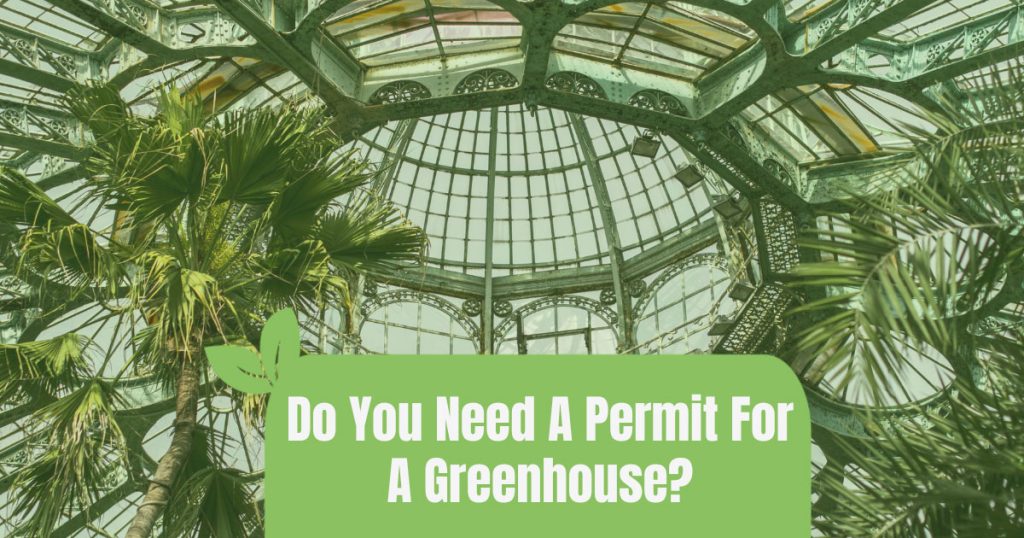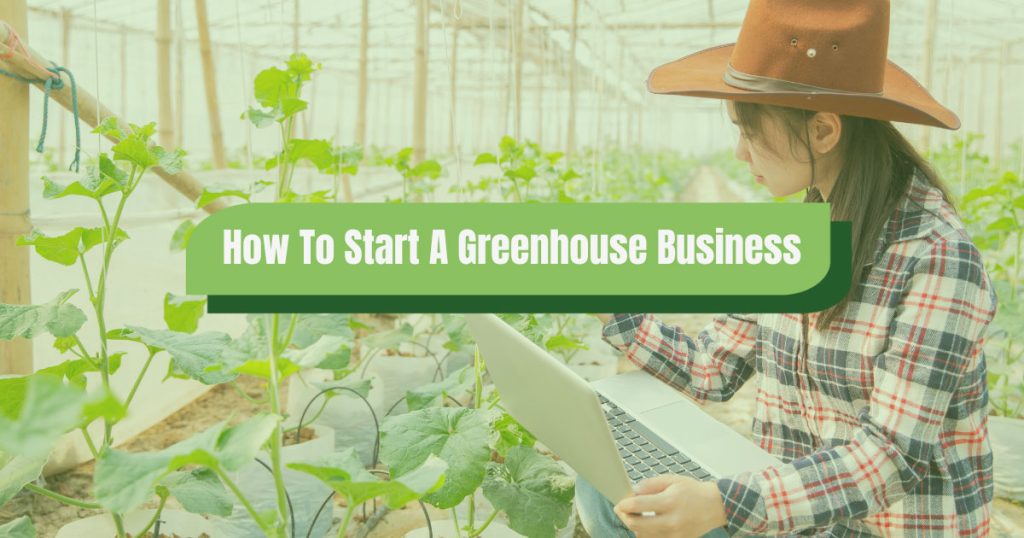At Greenhouse Emporium, we understand the importance of maintaining the perfect environment for your plants, even when temperatures drop. Solar panels stand as one of the best ways to heat a greenhouse without electricity. And that’s why we’ve created this guide on how to heat a greenhouse with solar panels.
In this guide, we’ll cover the essentials: the tools and components you’ll need for solar heating, a step-by-step walkthrough of the installation process, insights into how solar panels function in the greenhouse context, and the number of panels required for optimal heat. We’ll also highlight the tangible benefits of solar heating, from cost savings to environmental impact.
Let’s dive in and equip you with the knowledge to keep your greenhouse warm with solar energy.
How to Heat a Greenhouse with Solar Panels
Required tools and components
To transform your greenhouse into a solar-powered sanctuary, you’ll need to gather some specific gear. Here’s the rundown:
- Solar panel kit: This is the heart of your operation. A standard kit should include photovoltaic panels, a housing unit for protection, alligator clips for connections, a voltage sensor to monitor power output, a handle and fasteners for installation, a temperature sensor to gauge efficiency, and a charge controller to regulate the energy flow.

- Mounting brackets or rail system: These are crucial for securing your panels. Whether you opt for a fixed or adjustable system, the quality of your mounting gear directly impacts the longevity and performance of your solar setup.
- Inverter: This device is a must-have for converting the DC electricity generated by your panels into AC power, which is what your greenhouse will use.
- Batteries for energy storage: If you’re planning an off-grid system, batteries are your energy reservoirs for when the sun isn’t shining.
- Monitoring system: Keeping tabs on your solar setup is vital. A good monitoring system will provide real-time data on energy production and consumption, allowing for efficient management of your greenhouse’s climate.
Plan your placement
Strategic placement is key. From our experience, solar panels perform best when facing south, positioned at an angle between 30 and 45 degrees. This orientation maximizes sunlight absorption throughout the day, ensuring your plants receive consistent warmth.
Install the support
Once you’ve pinpointed the perfect location, it’s time to install the mounting brackets or rail system. This framework supports the weight of the panels and withstands environmental stressors like wind and snow.
Ensure your greenhouse can support this additional weight and that the angle of the panels is optimized for your specific latitude.
Connect and conquer
With the supports in place, you’ll connect the panels to your system. It’s essential to use insulated cables and proper grounding techniques to prevent electrical hazards. This step is not just about safety; it’s also about ensuring the energy your panels capture is efficiently transferred to where it’s needed.
Set up the solar panels
Now for the exciting part—installing the solar panels. Select a location that’s dry and well-ventilated to set up your photovoltaic system. Many choose a space like a garage or shed to house the panels.
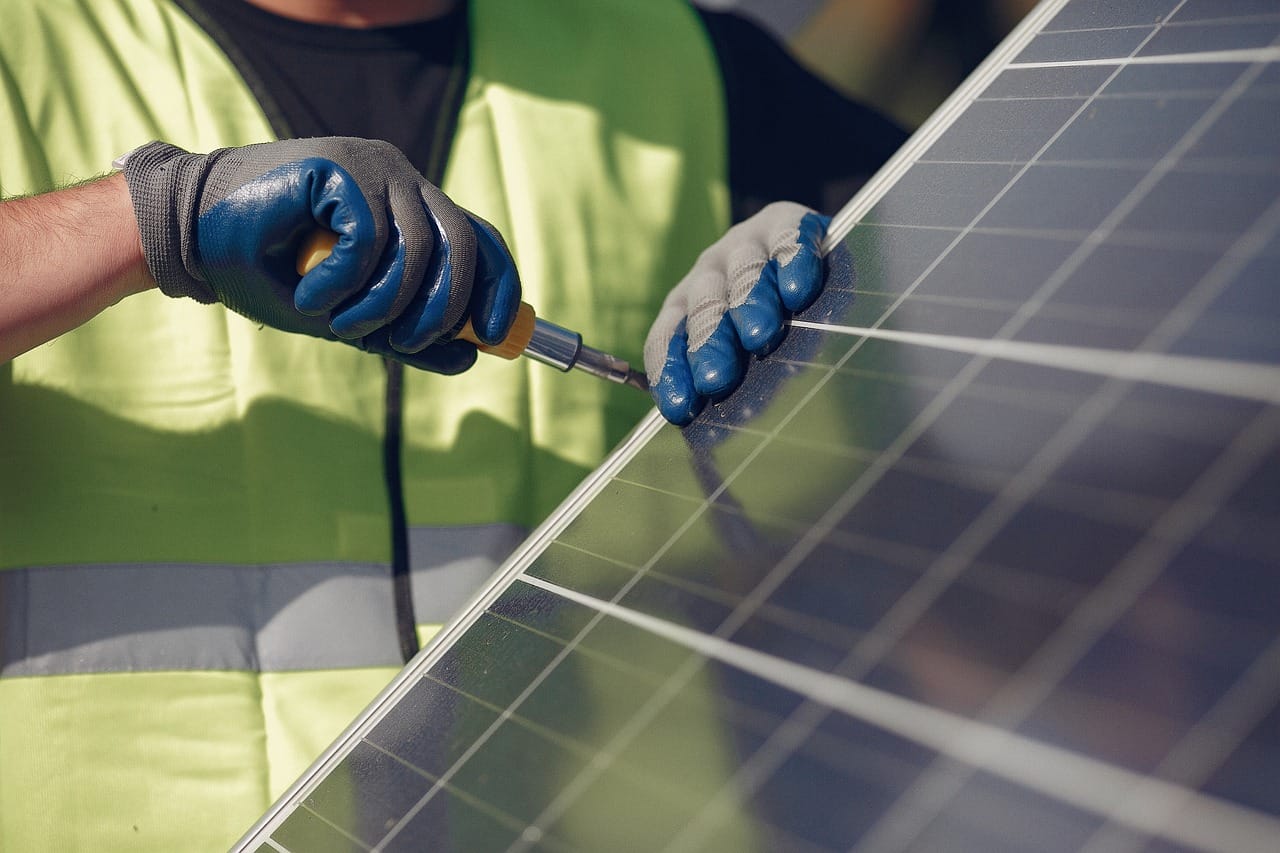
Complete your installation
The culmination of your project is integrating the solar system with your greenhouse’s electrical setup. The inverter plays a pivotal role here, transforming the solar energy into a form that can power heaters, fans, and other greenhouse essentials. This integration must be done with precision to ensure a seamless flow of energy from your panels to your plants.
How Do Solar Panels Work For Greenhouses?
The science behind solar panels is as fascinating as it is practical. At their core, solar panels consist of many photovoltaic cells made from layers of silicon, phosphorus, and boron. When sunlight hits these cells, it knocks electrons loose, creating a flow of electricity. This process, known as the photovoltaic effect, is the cornerstone of solar energy technology.
In the context of greenhouse solar panels, these panels serve as a mini power station. Even on overcast days, photons from indirect sunlight continue to engage with the photovoltaic cells, ensuring a steady production of electricity, albeit at lower efficiency compared to sunny days.
This is why solar panels are a reliable energy source for greenhouses, even in less-than-ideal weather conditions.
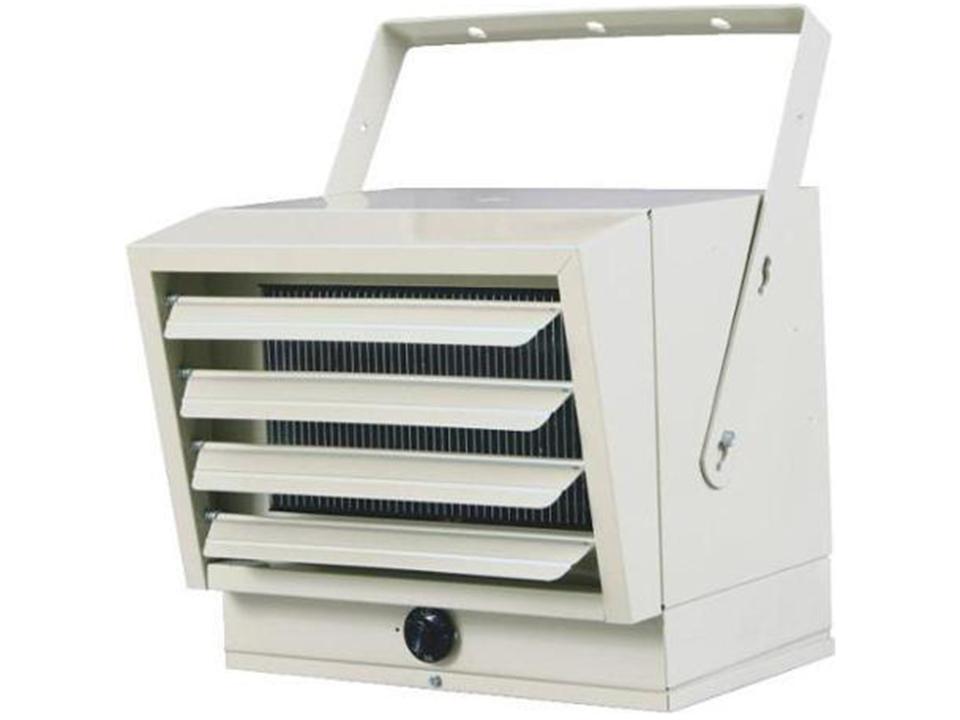
Once the electricity is generated, it’s directed to an inverter, where it’s converted from direct current (DC) to alternating current (AC), the form of electricity that can power greenhouse essentials like heaters and fans. This conversion is crucial because most heating systems and appliances operate on AC power.
The energy then flows to the heaters, which maintain a consistent and optimal temperature for plant growth. Fans can also be powered by this energy, circulating air to prevent hotspots and ensure an even distribution of heat.
Additionally, advanced monitoring systems can be solar-powered to keep track of temperature, humidity, and light levels, giving you precise control over the greenhouse environment.
This setup not only maintains the perfect climate for your plants but does so in a way that’s both cost-effective and environmentally friendly.
In our experience, by using solar panels, you’re reducing reliance on traditional energy sources, which often come with fluctuating costs and contribute to greenhouse gas emissions. Instead, you’re investing in a sustainable system that provides clean, green energy directly from the sun.
How Many Solar Panels Do You Need for a Greenhouse?
After making use of solar panels ourselves, we’ve found that determining the number of solar panels required to heat your greenhouse is not a one-size-fits-all answer. It’s a calculation that considers several variables, each contributing to the final count. Let’s break down these factors:
Greenhouse size
The size of your greenhouse is the most straightforward factor as it has the most direct impact on your heating requirements. Heating a small greenhouse will require less energy and heat than a larger one, meaning that you’ll need fewer solar panels.
For example, a small greenhouse of about 150 square feet may only need a couple of 250-watt panels, while a more spacious one of 600 square feet could require at least 10 of those panels to maintain a warm environment.
Local climate
Your local climate dictates how much sunlight is available and the intensity of the heating required. In sunny regions with mild winters, you’ll need fewer panels. For instance, a greenhouse in Arizona might get by with just 60% of the panels that a similar greenhouse would need in cloudy, cold Maine.

Energy needs
Your specific energy needs, such as the types of plants you’re growing and the desired temperature increase, will also influence the panel count.
If you’re growing tropical plants that require high warmth, you’ll need more panels. A greenhouse keeping temperatures at 75°F for tropical plants might need double the number of panels compared to one maintaining a 50°F environment for hardy greens.
Examples of solar panel setups
- Small greenhouse in a mild climate: A 150-square-foot greenhouse in a region like Northern California might require around 2-4 panels of 250 watts each if you’re aiming to extend the growing season for cool-season crops.
- Medium greenhouse in a harsh climate: A 300-square-foot structure in a colder area like Minnesota, especially if aiming to grow warm-season plants, could need around 12-16 panels of 250 watts to ensure a consistent, warm environment.
- Large commercial greenhouse: For those running a commercial operation in a 1,000-square-foot greenhouse and needing to maintain tropical conditions in a moderate climate, the number could jump to 20-30 panels or more.
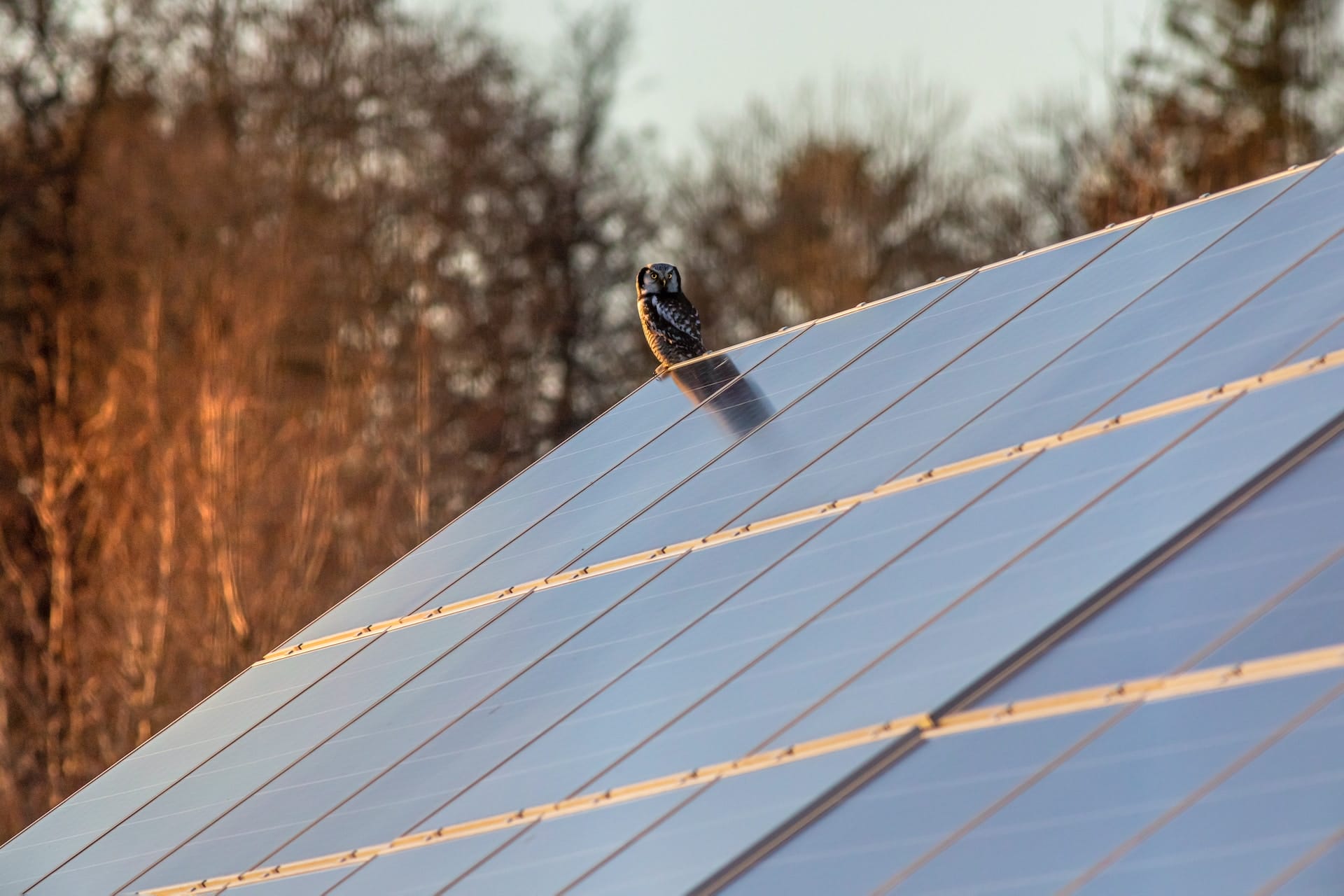
In all cases, these figures are estimates. The actual number will depend on the specifics of your situation, including the efficiency of your solar panels and the insulation of your greenhouse. It’s always recommended to consult with a solar energy expert who can analyze your unique circumstances and provide a precise calculation.
Benefits of Using Solar Panels to Heat a Greenhouse
Cuts costs
Investing in solar panels for your greenhouse heating needs is financially savvy. The initial setup cost is quickly offset by the elimination of ongoing fuel bills. Over time, the savings become substantial, as sunlight doesn’t come with a price tag.
For instance, after the initial investment, a solar-powered greenhouse can virtually eliminate the monthly expense of gas or electric heating. This makes it a standout on our list for the cheapest way to heat a greenhouse in winter.
Simplicity
The beauty of a solar-powered greenhouse lies in its simplicity. Once installed, solar heating systems require minimal maintenance. They’re designed to be user-friendly, often accompanied by smart monitoring systems that provide real-time updates and alerts, making it easier for even the least tech-savvy gardeners to keep their greenhouses running smoothly.
Reliability
The reliability of solar energy stands on its own merits. A well-installed solar system offers a steady and dependable source of power, ensuring that your greenhouse maintains the correct minimum greenhouse temperature for a consistent and optimal growing environment.
The continuous operation of solar panels means that your plants are nurtured in a stable climate, conducive to healthy growth and development, free from the worry of temperature fluctuations.
Eco-friendly
Solar heating is a green solution in more ways than one. It’s not just about maintaining your verdant paradise; it’s also about preserving the larger environment. Solar energy doesn’t emit greenhouse gases, and by reducing your reliance on fossil fuels, you’re contributing to a cleaner, healthier planet.
And what’s more, if you’re looking into how to cool a greenhouse without electricity, solar panels can be of use for that, too, further increasing the eco-friendliness of your setup.
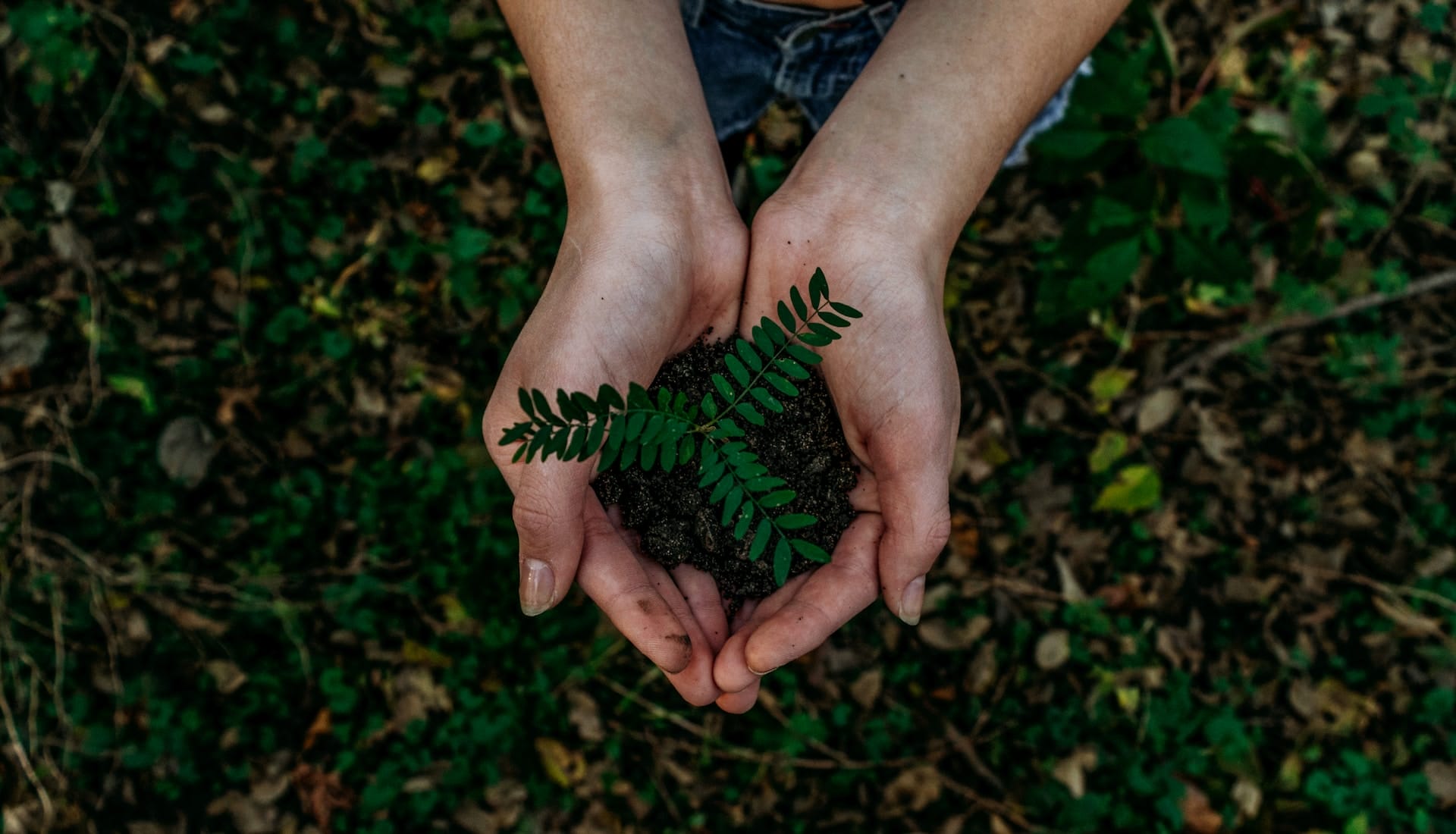
Uninterrupted growth
Solar panels ensure that your plants receive a continuous supply of warmth, regardless of power grid issues. This uninterrupted energy flow is crucial for delicate species that require stable conditions, safeguarding against the stress that temperature fluctuations can cause.
Supports energy independence
Using solar panels for greenhouse heating promotes energy independence. By generating your own heat, you’re less vulnerable to energy market volatility and price spikes.
This self-sufficiency is not only empowering but also ensures that your greenhouse operations are shielded from external disruptions.
Encourages sustainable practices
Embracing solar technology encourages a cycle of sustainability. It can inspire other eco-friendly practices, such as water conservation through rainwater harvesting or the use of organic fertilizers. This holistic approach to gardening can lead to a more sustainable lifestyle overall.
Quiet operation
Solar panels and the systems they power operate quietly, maintaining a peaceful atmosphere for both the gardener and the plants. This is a stark contrast to some fuel-based heaters that emit noise during operation, which can be disruptive to the serenity of your gardening experience.
Ready to harness the sun’s power and give your plants a warm, sustainable haven? Visit Greenhouse Emporium for all your greenhouse kit and heating needs.

















